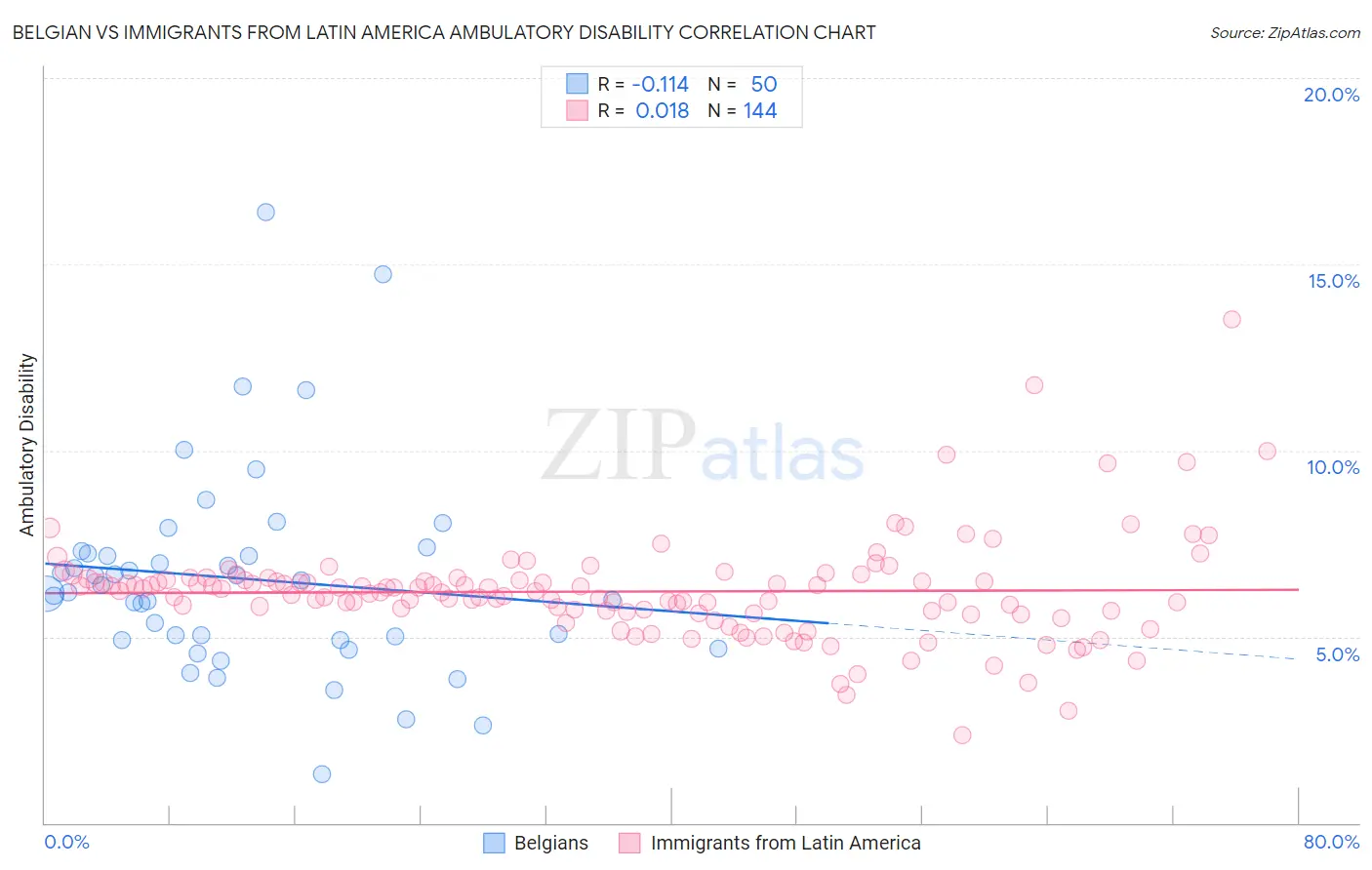Belgian vs Immigrants from Latin America Ambulatory Disability
COMPARE
Belgian
Immigrants from Latin America
Ambulatory Disability
Ambulatory Disability Comparison
Belgians
Immigrants from Latin America
6.2%
AMBULATORY DISABILITY
28.6/ 100
METRIC RATING
195th/ 347
METRIC RANK
6.3%
AMBULATORY DISABILITY
11.0/ 100
METRIC RATING
215th/ 347
METRIC RANK
Belgian vs Immigrants from Latin America Ambulatory Disability Correlation Chart
The statistical analysis conducted on geographies consisting of 355,928,519 people shows a poor negative correlation between the proportion of Belgians and percentage of population with ambulatory disability in the United States with a correlation coefficient (R) of -0.114 and weighted average of 6.2%. Similarly, the statistical analysis conducted on geographies consisting of 558,117,601 people shows no correlation between the proportion of Immigrants from Latin America and percentage of population with ambulatory disability in the United States with a correlation coefficient (R) of 0.018 and weighted average of 6.3%, a difference of 1.5%.

Ambulatory Disability Correlation Summary
| Measurement | Belgian | Immigrants from Latin America |
| Minimum | 1.3% | 2.4% |
| Maximum | 16.4% | 13.5% |
| Range | 15.1% | 11.1% |
| Mean | 6.6% | 6.2% |
| Median | 6.3% | 6.2% |
| Interquartile 25% (IQ1) | 4.9% | 5.7% |
| Interquartile 75% (IQ3) | 7.2% | 6.5% |
| Interquartile Range (IQR) | 2.3% | 0.86% |
| Standard Deviation (Sample) | 2.8% | 1.4% |
| Standard Deviation (Population) | 2.7% | 1.4% |
Demographics Similar to Belgians and Immigrants from Latin America by Ambulatory Disability
In terms of ambulatory disability, the demographic groups most similar to Belgians are Malaysian (6.2%, a difference of 0.030%), Polish (6.2%, a difference of 0.15%), Immigrants from Bangladesh (6.2%, a difference of 0.27%), Italian (6.2%, a difference of 0.42%), and Immigrants from Cambodia (6.2%, a difference of 0.50%). Similarly, the demographic groups most similar to Immigrants from Latin America are Immigrants from Mexico (6.3%, a difference of 0.010%), Mexican American Indian (6.3%, a difference of 0.13%), Japanese (6.3%, a difference of 0.13%), Samoan (6.3%, a difference of 0.14%), and Immigrants from Laos (6.3%, a difference of 0.28%).
| Demographics | Rating | Rank | Ambulatory Disability |
| Belgians | 28.6 /100 | #195 | Fair 6.2% |
| Malaysians | 28.2 /100 | #196 | Fair 6.2% |
| Poles | 26.3 /100 | #197 | Fair 6.2% |
| Immigrants | Bangladesh | 24.6 /100 | #198 | Fair 6.2% |
| Italians | 22.6 /100 | #199 | Fair 6.2% |
| Immigrants | Cambodia | 21.5 /100 | #200 | Fair 6.2% |
| Immigrants | Central America | 20.1 /100 | #201 | Fair 6.2% |
| Albanians | 19.7 /100 | #202 | Poor 6.2% |
| Immigrants | Ukraine | 18.4 /100 | #203 | Poor 6.2% |
| Immigrants | Congo | 18.2 /100 | #204 | Poor 6.2% |
| Slovenes | 18.0 /100 | #205 | Poor 6.2% |
| Finns | 17.2 /100 | #206 | Poor 6.2% |
| Alsatians | 15.1 /100 | #207 | Poor 6.3% |
| Bangladeshis | 14.2 /100 | #208 | Poor 6.3% |
| Immigrants | Iraq | 14.0 /100 | #209 | Poor 6.3% |
| Immigrants | Laos | 13.2 /100 | #210 | Poor 6.3% |
| Samoans | 12.1 /100 | #211 | Poor 6.3% |
| Mexican American Indians | 12.0 /100 | #212 | Poor 6.3% |
| Japanese | 12.0 /100 | #213 | Poor 6.3% |
| Immigrants | Mexico | 11.0 /100 | #214 | Poor 6.3% |
| Immigrants | Latin America | 11.0 /100 | #215 | Poor 6.3% |